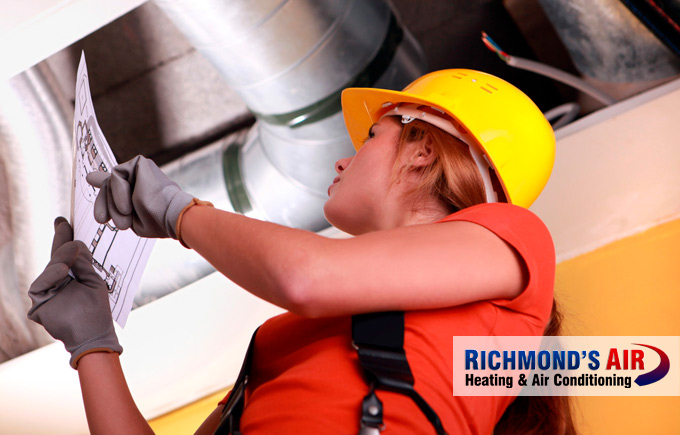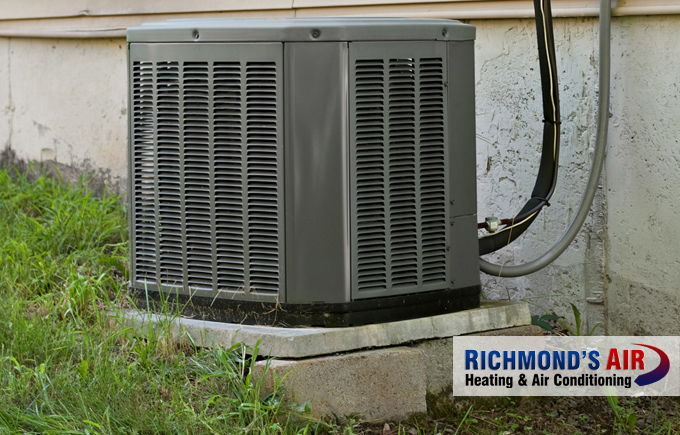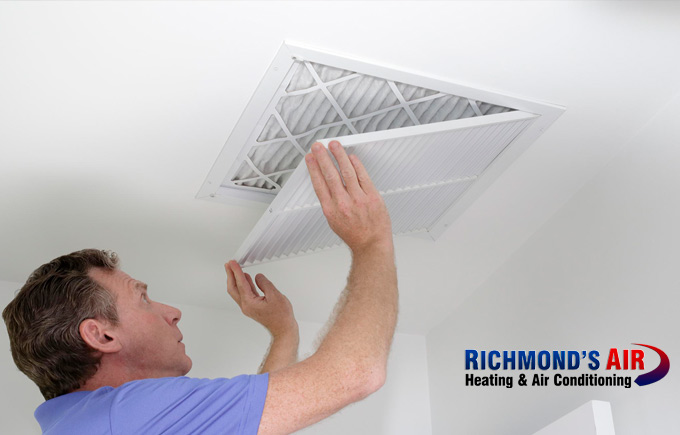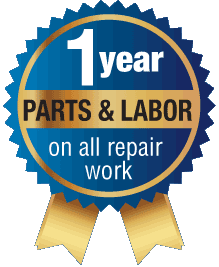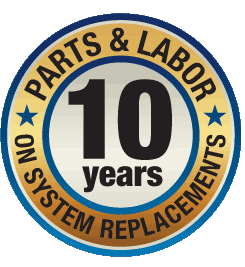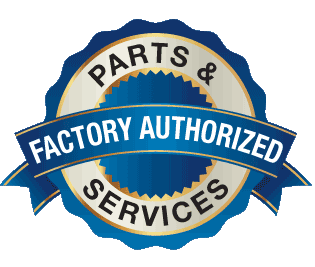A guide featuring the four most common HVAC system types, and the pros and cons of each
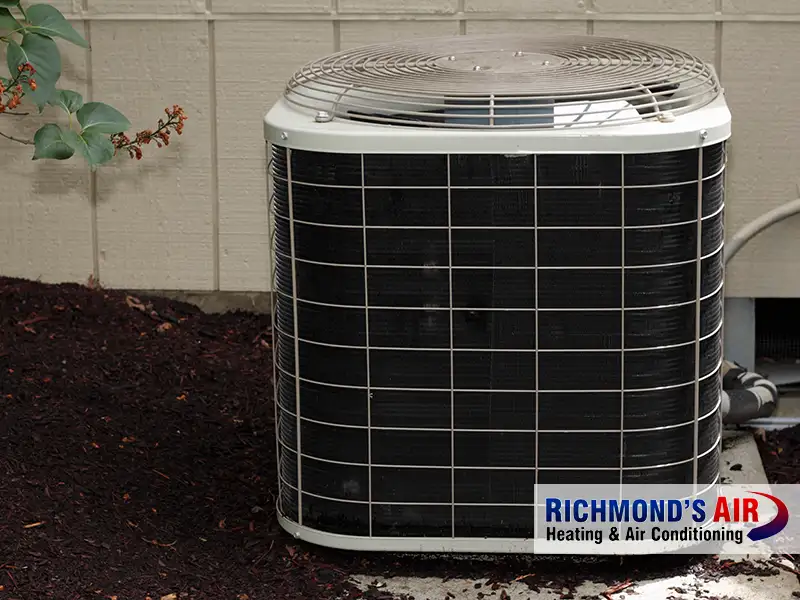
The hot summer temperatures in Houston mean that almost everyone has some type of air conditioning system. But what happens when your old system inevitably dies and needs some upgrading?
There are lots of options when it comes to choosing a new HVAC system for your home, but the truth is, it can be intimidating. There are so many different parts, sizes and types—so how do you decide which one is right for you?
To help you out, let’s take a closer look at the 4 most common types of residential HVAC systems.
Standard split systems
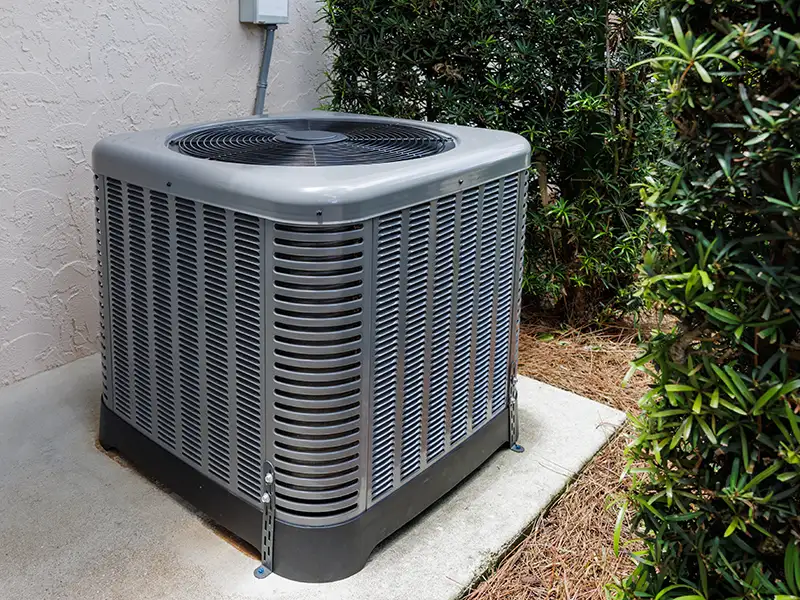
The standard split system, featuring one indoor unit and one outdoor unit, continues to be the most commonly used HVAC system in homes. These split systems can be tailored in multiple ways to meet the specific climate needs of your location:
- Furnace and air conditioner. The majority of these systems use a gas furnace, with only about 5% utilizing an oil furnace. Gas furnaces can vary in efficiency from 80% (more suitable for warmer regions) to 98% (more cost-effective in extremely cold climates). The condensing unit of the air conditioner is usually located outdoors. A crucial part of the system is the evaporator coil, generally housed within the furnace cabinet. This coil captures heat and expels it outside through refrigerant flowing in copper tubes. The efficiency of air conditioner units also varies, and it’s more practical to opt for a unit with a higher SEER rating if you live in a hotter climate.
- Air handler and heat pump. In regions with mild winters where freezing temperatures are uncommon, heat pump split systems are often used. These systems utilize a heat pump to provide both heating and cooling, eliminating the need for a separate air conditioner and furnace. Various efficiency options are available. The heat pump functions much like an air conditioner but has the added capability to reverse its function during colder months. Instead of a furnace, an air handler equipped with a blower motor is used to distribute the heat.
- Furnace and heat pump. Dual fuel or hybrid heat systems, which are ideal for extremely cold climates, combine a furnace and a heat pump. The heat pump provides warmth during moderately cold conditions, while the gas furnace takes over automatically when temperatures fall below freezing, at which point the heat pump becomes less efficient.
Pros and cons of standard split systems
Split systems provide the most versatile options and are particularly cost-effective, especially for replacement installations. These systems can often be set up with little to no adjustments to a home’s existing ductwork. Advanced two-stage and modulating systems also offer enhanced climate control.
However, the downside is that conventional split systems necessitate ductwork, making them unsuitable for locations where installing ducts would be prohibitively expensive or unfeasible.
How much does installing a new central AC system cost?
There are a lot of factors that go into the cost of an AC installation—not only the location but also the manufacturer, the type of system, the size of your home, etc. Understand the potential costs with our helpful guide.
Ductless split systems
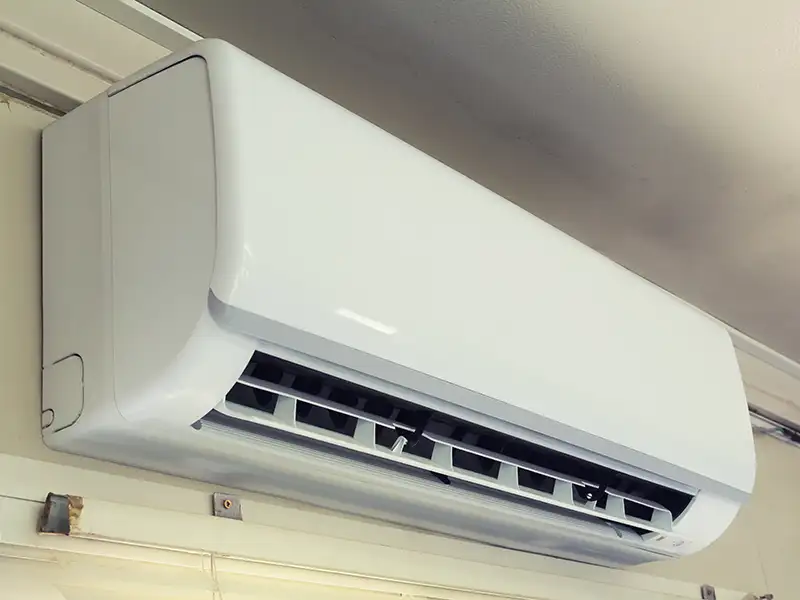
Ductless split systems (or ductless mini-split systems) consist of an outside air conditioner for cooling only or a heat pump for cooling and heating. Furnaces are not an option in ductless split systems. The indoor component has a fan for dispersing treated air and can be installed on walls, the ceiling or the floor.
Pros and cons of ductless split systems
Ductless split systems are perfect for homes or offices lacking pre-existing ductwork. A single external unit can supply conditioned air to up to 4 indoor areas, each controlled by its individual thermostat for accurate, zoned temperature management. These systems offer a range of efficiency levels, from good to excellent, which helps cut down on energy consumption and costs.
However, the drawbacks include their ineffectiveness in extremely cold environments and a more limited set of features compared to standard split systems.
Packaged systems
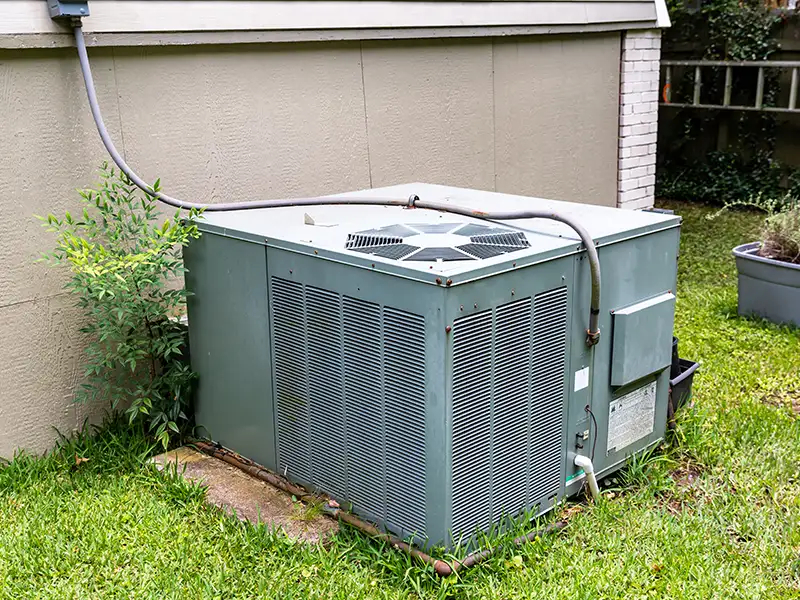
In a packaged system, all key components are housed within a single, large cabinet, making them especially popular for homes without basements.
These units are solely installed outdoors and come equipped with a blower that circulates conditioned air into the home while pulling in untreated air for processing. How they heat and cool your home depends on the type of unit:
- Gas/electric. This has both a gas furnace and an air conditioner.
- Heat pump. This has one unit that provides both heating and cooling.
- Hybrid. This has a heat pump for most of the heating and all of the cooling, and a gas furnace for heating when temperatures are below freezing.
Pros and cons of packaged systems
Packaged systems come into play when traditional split systems aren’t feasible. One benefit is their quieter operation within the home, as all mechanical parts are located outside.
However, the downsides include fewer customization options compared to standard or ductless split systems, as well as lower efficiency. Additionally, because all the components are exposed to the elements outdoors, these systems typically have a shorter lifespan than other HVAC options.
Geothermal HVAC systems
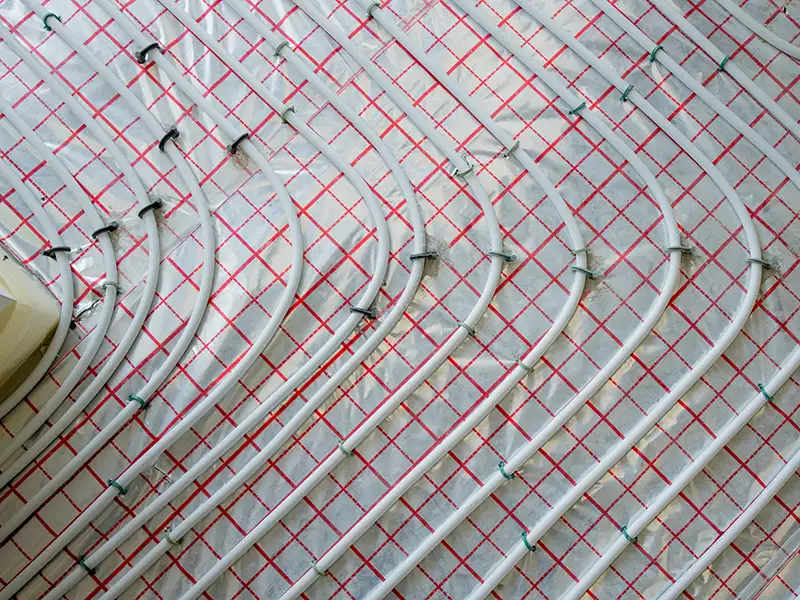
Geothermal systems use the stable temperatures of the earth to facilitate heating and cooling. Water, often containing refrigerant, is circulated through pipes installed in water or the ground to collect or shed heat.
The constantly moderate temperatures of the ground facilitate efficient dumping of heat in summer and collecting of heat in winter.
Pros and cons of geothermal systems
Geothermal HVAC systems offer efficiency levels up to 4 times that of traditional systems. The reductions in energy use and cost are significant.
Nonetheless, the primary drawback of geothermal HVAC systems is their cost, which can be 2 to 5 times higher than other types of HVAC systems.
What are the best residential air conditioner brands?
A guide to the top AC brands for homeowners in Houston, TX.
FAQs
What is the cheapest HVAC system?
The cheapest type of HVAC system is usually a window air conditioner. These units are highly affordable, with prices ranging from around $150 to $600, depending on their cooling capacity and features.
However, they’re only practical for cooling individual rooms, not an entire home, and they’re far less efficient than central systems or ductless mini-split systems. Additionally, having a window unit can sometimes pose a security risk, as it may be easier for intruders to enter through the window where the unit is installed.
The next best low-cost option is a ductless mini-split system. While these systems are more expensive upfront—often starting at around $1,000 for the units alone—they offer several advantages over window units:
- Versatility. They can provide both heating and cooling.
- Efficiency. Generally, they’re more energy-efficient than window units, which can save you money in the long run.
- Quiet operation. These systems are usually much quieter than window units.
- Aesthetics. Ductless units are less obtrusive and can be more easily integrated into your home’s decor.
So, while window units may offer a cheaper initial price point, ductless mini-split systems provide a more versatile and efficient solution that could be more cost-effective over the long term.
What is the most efficient HVAC system for a home?
The most efficient HVAC system for a home typically falls under the category of geothermal heat pumps. Here are some reasons why geothermal systems are considered highly efficient:
- Energy savings. They use significantly less electricity, resulting in lower utility bills.
- Longevity. Geothermal heat pumps tend to have a long lifespan, often between 25-50 years for the underground infrastructure and 20-25 years for the indoor units.
- Sustainability. These systems produce lower greenhouse gas emissions compared to conventional HVAC systems.
- Multi-functional. They offer both heating and cooling solutions and can even provide hot water, making them a comprehensive choice for year-round comfort.
- Low maintenance. Geothermal systems require less maintenance than traditional HVAC systems.
However, if the high price tag of a geothermal unit means it isn’t an option for you, high-efficiency air-source heat pumps or high-efficiency mini-split heat pumps are good alternatives. Look for systems with a high seasonal energy efficiency ratio (SEER) rating, as it indicates better efficiency.
Is a high-efficiency HVAC system worth the extra cost?
Investing in a high-efficiency HVAC system may be well worth the higher initial costs, as these units are engineered to use less energy for the same level of heating or cooling, which can translate into substantial utility bill reductions over time. According to the Department of Energy, the lifetime savings from high-efficiency HVAC systems can range anywhere from $394 to $1,925.
Additionally, many of these advanced systems come with features like variable-speed motors and smart thermostats that further maximize energy savings.
To determine if a high-efficiency system is a good investment for you, consider calculating the payback period—the time it takes for the energy savings to offset the initial cost. In climates with extreme temperatures like Houston or areas where energy costs are high, the payback period may be relatively short, making the initial investment more justifiable.
Top 10 questions to ask your HVAC contractor
Before you have HVAC work done in your home, it’s a good idea to ask potential contractors the following questions.
How long should a home HVAC last?
A typical home HVAC system, such as a central air conditioner or furnace, generally lasts between 15-20 years with proper maintenance. However, the lifespan can vary depending on factors such as usage, climate, and how well the system has been maintained. Regular tune-ups and timely repairs can extend the life of the system.
It’s also important to note that individual components may have varying lifespans; for example, furnaces often outlast central air conditioners. After about 10 years, homeowners may want to start considering the cost-benefit of replacing older units, as newer systems are generally more energy-efficient and reliable.
What time of year is best to replace an HVAC system in Texas?
The best time to replace an HVAC system in Texas is typically during the spring or fall. During these seasons, the weather is milder, so you’ll likely not require heavy heating or cooling while your system is being replaced. This not only makes it a more comfortable time for you to be temporarily without AC, but it also makes it easier for technicians to perform the installation.
Additionally, HVAC companies are generally less busy during these times, which could lead to faster service and potentially better deals.
In contrast, waiting until the summer, when temperatures can soar, could mean longer wait times and possibly higher prices due to increased demand. Therefore, planning your replacement for the spring or fall is often the most convenient and cost-effective approach.
Need help deciding which HVAC system is right for your home?
Before you decide what type of HVAC system is right for your home, we strongly recommend talking to a certified HVAC technician. At Richmond’s Air, we can help you choose the best system to meet your needs. If you live in the Houston area, contact us today to learn more.
 Read reviews
Read reviews